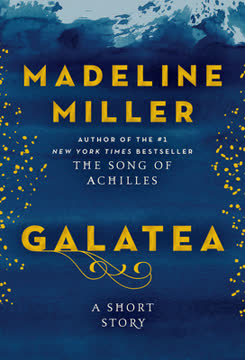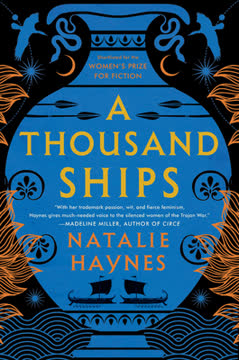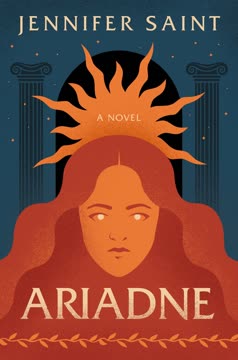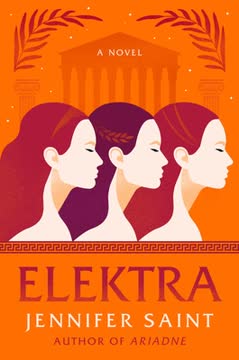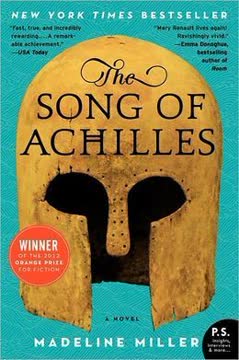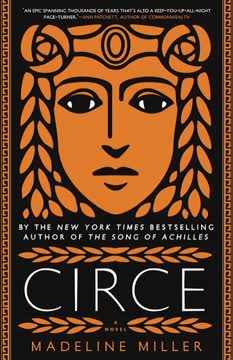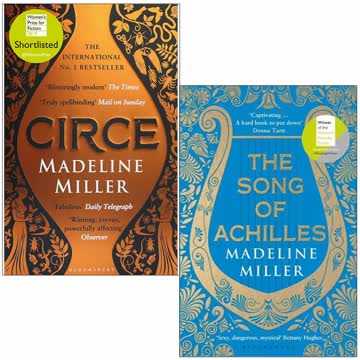Plot Summary
Stone to Flesh Awakening
Galatea, once marble, is now flesh, animated by a goddess at her sculptor-husband's desperate request. Her new life is not one of freedom, but of confinement and expectation. She is observed, managed, and doubted by those around her—nurses, doctors, and above all, her husband, who sees her as both his masterpiece and his possession. Galatea's transformation is not a liberation but a new kind of captivity, where her every word and gesture is scrutinized for signs of illness or rebellion. The miracle of her existence is overshadowed by the reality of her powerlessness, and the coldness of her stone past lingers in her body and mind.
The Gilded Cage
Galatea's days are spent in a small, stifling room, watched over by a nurse who prefers her sick and compliant. The window is too high, the air stale, and the walls close in like a bruise. The nurse and doctor, more interested in pleasing her husband than in her well-being, enforce a regime of rest and medication. Galatea's requests for sunlight or a walk are dismissed, her stone origins treated as delusion. The care she receives is a form of control, designed to keep her docile and contained, reinforcing the boundaries of her gilded cage.
The Sculptor's Gaze
Her husband, the sculptor, visits, inspecting her as if she were still marble. He relishes the ritual of pretending she is asleep, marveling at his own handiwork, and invoking the goddess for her continued perfection. Their intimacy is performative, a reenactment of her awakening for his pleasure. Galatea must arrange herself just so, her fingers posed as he sculpted them, her responses tailored to his expectations. His love is possessive, rooted in the pride of creation and the need for control, leaving Galatea trapped between gratitude and resentment.
Lessons in Obedience
Galatea learns to navigate her captivity by feigning compliance—apologizing, snuggling, even practicing fainting to please the doctor. She adapts to the roles expected of her, using her beauty and supposed frailty as shields. Her husband's wealth and reputation depend on her continued docility, and she is acutely aware of the stakes. The threat of punishment, whether through isolation, medication, or withdrawal of affection, looms over every interaction. Galatea's survival depends on her ability to perform obedience, even as she quietly resents the constraints imposed upon her.
The Daughter's Light
Galatea's daughter, Paphos, is her greatest source of happiness and her deepest vulnerability. Born of the first union with her husband, Paphos is clever, curious, and full of life. Their bond is a rare comfort in Galatea's constrained world, and she delights in teaching and playing with her. Yet, Paphos is also a point of contention with her husband, who resents the affection between mother and child. The girl's intelligence and independence threaten his authority, and Galatea must tread carefully to protect her daughter from his control.
Bruises and Blushes
The sculptor's need for dominance manifests in physical and emotional violence. He is angered by any sign of autonomy or affection directed elsewhere, and punishes Galatea for perceived disobedience. She is forced to display shame and vulnerability, to blush on command, as proof of her continued malleability. The marks he leaves on her body are both evidence of his power and a perverse source of artistic satisfaction. Galatea's pain is aestheticized, her suffering transformed into another aspect of her beauty.
The Art of Survival
Galatea develops strategies to endure her circumstances—collecting coins, stealing shoes and cloaks, and feigning illness or compliance as needed. She learns to manipulate the expectations of those around her, using their assumptions to her advantage. Her intelligence and resourcefulness are her only weapons, and she clings to small acts of defiance as a means of preserving her sense of self. The constant performance is exhausting, but necessary for her survival and for the hope of eventual escape.
Motherhood in Marble
Despite her own limitations, Galatea is determined to give Paphos a better life. She insists on a tutor for her, encouraging her curiosity and independence. Their secret lessons, using sticks and sand to form letters, become acts of quiet rebellion. Galatea's love for her daughter is fierce and protective, and she is willing to risk her husband's wrath to nurture Paphos's mind. The bond between mother and child is a source of strength, even as it exposes them both to greater danger.
The Failed Escape
Galatea and Paphos attempt to flee to the countryside, seeking the freedom and joy they once shared. Their escape is short-lived, as their unusual appearance draws attention and they are quickly discovered. The failure reinforces the impossibility of true freedom within the confines of their world. Galatea is returned to her prison, her hope diminished but not extinguished. The experience deepens her resolve to protect her daughter and to find another way out.
The Price of Perfection
Galatea's body bears the marks of motherhood—stretch marks that her husband finds ugly, wishing he could chisel them away. His obsession with perfection is unrelenting, and he begins work on a new statue, a girl even younger than Paphos. Galatea is reminded that her value lies in her beauty and compliance, and that any deviation from the ideal is grounds for rejection or replacement. The pressure to remain perfect is suffocating, and Galatea is haunted by the knowledge that she can never truly satisfy her creator's desires.
The Second Creation
The sculptor's latest work is a statue of a ten-year-old girl, intended to surpass even Galatea in beauty and innocence. The presence of this new creation is both a threat and a reminder of Galatea's replaceability. She is tormented by the thought of her daughter being supplanted or harmed, and by the knowledge that her husband's desires are insatiable. The new statue embodies the dangers of objectification and the endless cycle of creation and destruction that defines her existence.
The Nurse's Complicity
The nurse, though complicit in Galatea's confinement, is not without her own struggles. She enforces the rules and administers the hated tea, but also offers small acts of kindness—a gentle touch, a moment of understanding. Her motivations are complex, shaped by her own vulnerabilities and desires. The nurse's role highlights the ways in which systems of control are maintained by those who are themselves oppressed, and the possibility of solidarity even in the midst of complicity.
The Deception of Tea
The doctor and nurse use medicated tea to sedate and control Galatea, punishing her for resistance and ensuring her compliance. The tea is both a literal and symbolic means of erasing her agency, dulling her senses and making her more manageable. Galatea learns to feign submission to avoid the tea, but it remains a constant threat. The use of medication underscores the power dynamics at play, and the ways in which women's bodies are policed and controlled.
The Final Rebellion
Galatea feigns pregnancy to manipulate her husband and the household, using the ruse to orchestrate her escape. With the nurse's reluctant assistance, she is able to leave the house under the cover of night. Her plan is risky and fraught with danger, but it is her only chance to reclaim her life and protect her daughter. The act of rebellion is both a culmination of her years of endurance and a testament to her courage and ingenuity.
The Sea's Embrace
Galatea flees to her husband's house, leaving a message for Paphos and confronting the new statue. She is pursued by her husband, and their final confrontation takes place at the edge of the sea. The chase is desperate and violent, a struggle for survival and autonomy. Galatea's determination is matched by her husband's rage, and the outcome is uncertain until the very end.
The End of the Sculptor
In the sea, Galatea allows herself to be caught, but uses her weight and strength to pull her husband under. As they sink, her body returns to stone, becoming immovable and inescapable. The sculptor, once master of marble, is undone by his own creation, drowned by the woman he sought to possess. The act is both a final assertion of agency and a tragic sacrifice, as Galatea chooses death over continued subjugation.
The Legacy of Paphos
As Galatea sinks to the ocean floor, she thinks of her daughter—clever, resilient, and free from her father's grasp. The legacy of her love endures, embodied in Paphos and the lessons she has imparted. The story ends with a sense of bittersweet hope, as the cycle of oppression is broken and the possibility of a different future is preserved. Galatea's sacrifice is not in vain, and her memory lives on in the strength and independence of her child.
Characters
Galatea
Galatea is the heart of the story—a woman created from marble, brought to life by divine intervention, and trapped by the desires of her sculptor-husband. Her existence is defined by objectification, confinement, and the constant threat of violence. Yet, beneath her surface compliance lies a fierce intelligence and a deep capacity for love, especially for her daughter, Paphos. Galatea's journey is one of adaptation and resistance, as she learns to navigate the expectations of those around her while plotting her own survival. Her transformation from passive object to active agent is both painful and empowering, culminating in a final act of rebellion that secures her daughter's future at the cost of her own.
The Sculptor (Pygmalion)
The sculptor is both Galatea's maker and her jailer, obsessed with perfection and control. His love is possessive, rooted in pride and a desire to dominate. He is incapable of seeing Galatea as a person, viewing her instead as an extension of his own artistry and will. His need for obedience and beauty drives him to violence and manipulation, and his inability to accept change or imperfection leads to his downfall. The sculptor's character is a study in toxic masculinity and the dangers of unchecked power, serving as both antagonist and cautionary figure.
Paphos
Paphos is the child of Galatea and the sculptor, a living symbol of both their union and their conflict. She is intelligent, curious, and independent, qualities that endear her to her mother and threaten her father. Paphos's relationship with Galatea is one of mutual affection and learning, while her interactions with her father are marked by tension and resistance. As the story progresses, Paphos becomes the focus of Galatea's hopes for a better future, and her survival represents the possibility of breaking the cycle of oppression.
The Nurse
The nurse is tasked with enforcing Galatea's confinement, administering medication, and maintaining order. Her motivations are complex—she is both an enforcer of the sculptor's will and a victim of her own circumstances. At times, she shows moments of empathy and solidarity, offering small comforts and ultimately assisting in Galatea's escape. The nurse's character highlights the ways in which systems of control are perpetuated by those who are themselves marginalized, and the potential for resistance within complicity.
The Doctor
The doctor is responsible for Galatea's medical care, but his primary loyalty is to her husband. He uses his position to control and sedate Galatea, dismissing her desires and reinforcing her confinement. The doctor's actions are motivated by self-interest and a desire for approval, and he is quick to punish any sign of resistance. His character embodies the intersection of medical authority and patriarchal power, serving as both a tool of oppression and a symbol of institutional complicity.
The New Statue
The sculptor's latest creation, a statue of a ten-year-old girl, represents both Galatea's replaceability and the dangers of objectification. The new statue is intended to surpass Galatea in beauty and innocence, embodying the sculptor's insatiable desire for perfection. Its presence is a constant reminder of Galatea's precarious position and the endless cycle of creation and destruction that defines her existence.
The Goddess
The goddess who animates Galatea is a distant but powerful presence, her motives and intentions unclear. She grants life at the sculptor's request, but the consequences of this gift are ambiguous. The goddess's role raises questions about agency, autonomy, and the limits of divine intervention, serving as both a catalyst for the story and a symbol of the unpredictable nature of power.
The Governess
After the tutor is dismissed, the governess is brought in to oversee Paphos's education and behavior. Her presence is a further restriction on Paphos's freedom, and she serves as an extension of the sculptor's authority. The governess's role underscores the ways in which women are used to police and discipline one another within patriarchal systems.
The Tutor
The tutor is hired to teach Paphos, encouraging her curiosity and independence. His presence is a source of tension, as the sculptor becomes jealous and dismisses him, fearing his influence over both Galatea and Paphos. The tutor's brief role highlights the importance of education and the dangers of intellectual freedom in a repressive environment.
The Townspeople
The people of the town are both fascinated and unsettled by Galatea and her daughter, their whispers and stares reinforcing the family's isolation. They are complicit in the sculptor's rise to fame and wealth, yet unwilling to intervene in the private suffering of his household. The townspeople's role serves as a reminder of the broader social context in which the story unfolds, and the ways in which communities can enable or ignore abuse.
Plot Devices
Myth Reimagined as Feminist Allegory
Madeline Miller transforms the Pygmalion myth into a powerful feminist allegory, using the familiar story of a sculptor's love for his creation to explore themes of objectification, autonomy, and resistance. The narrative structure is intimate and psychological, focusing on Galatea's inner life and the dynamics of power and control that shape her existence. Foreshadowing is used to build tension, as Galatea's small acts of rebellion hint at the eventual climax. The use of first-person narration immerses the reader in Galatea's perspective, highlighting the emotional and psychological toll of her captivity. The interplay between myth and reality allows for a nuanced exploration of agency, identity, and the costs of perfection.
Analysis
Madeline Miller's "Galatea" is a haunting and incisive reimagining of the Pygmalion myth, recast as a meditation on autonomy, objectification, and the violence of idealization. Through Galatea's voice, Miller exposes the suffocating effects of being reduced to an object of desire, even when that desire is cloaked in love or artistry. The novella interrogates the power dynamics inherent in creation and possession, revealing how beauty and perfection can become tools of control and oppression. Galatea's journey from passive object to active agent is both a personal and political act, challenging the structures that confine her. The story's emotional arc—marked by longing, resilience, and sacrifice—resonates with contemporary questions about gender, agency, and the right to self-determination. Ultimately, "Galatea" is a testament to the enduring strength of those who resist dehumanization, and a call to recognize the humanity in those who have been rendered voiceless by the demands of perfection.
Last updated:
Review Summary
Galatea is a short but powerful feminist retelling of the Greek myth of Pygmalion, told from the perspective of the statue brought to life. Readers praised Miller's elegant prose and compelling narrative, which explores themes of objectification, control, and female agency. Many found the story haunting and brutal, wishing it were longer. While some felt it was too brief to fully develop characters, most appreciated its feminist critique and Miller's ability to breathe new life into ancient tales. Overall, it received positive reviews for its emotional impact and thought-provoking themes.
Similar Books
Download PDF
Download EPUB
.epub digital book format is ideal for reading ebooks on phones, tablets, and e-readers.
